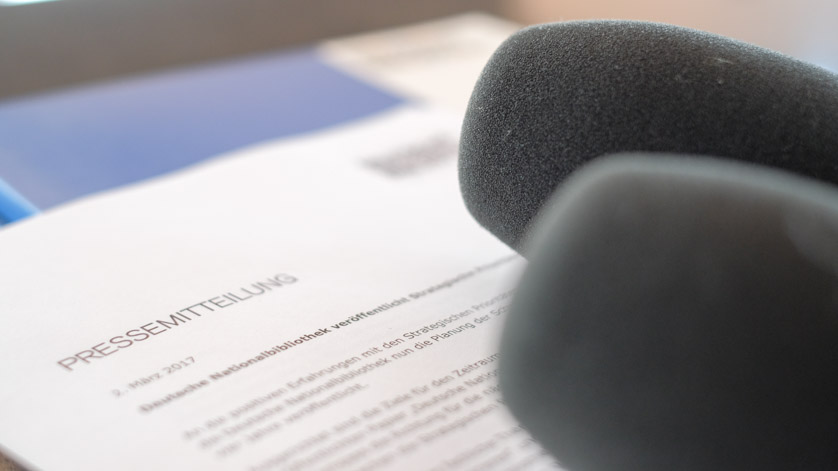Illustrierte Idylle? Die Gartenlaube: Gesichter eines Massenblattes

Gallery exhibition of the German Museum of Books and Writing. Exhibition opening at 19:00 on 7 November 2013 Vault of the German National Library in Leipzig
Press release: 30.10.2013
The German Museum of Books and Writing of the German National Library is presenting the “Illustrierte Idylle? Die Gartenlaube: Gesichter eines Massenblattes” exhibition from 8 November 2013 to 11 May 2014. The exhibition will be officially opened on Thursday, 7 November at 19:00 in the Museum Foyer of the German National Library in Leipzig.
When the Leipzig publisher Ernst Keil announced the publication of his “new publication for the home and family, .. for the young and old, for everybody...” 160 years ago, scarcely anyone was able to foresee the success and significance which Die Gartenlaube would later enjoy. Who would have thought that it would lay the foundations for the development of the modern glossy magazine? Through the Gartenlaube pictures, which occupy a special place in German press history, the gallery exhibition explores the production techniques and different facets of the mass publication.
Die Gartenlaube, the Pfennig-Magazin and the Illustrirten Zeitung featured black and white wood cut pictures and were part of the group of media which ushered in the start of the illustrated mass press in the 19th century. As an “illustrated family magazine” it embodied a new type of medium and went on to become one of the top-selling, most influential and frequently copied magazines. It was to be found in many bookcases, comprising a collection of facts, advice and entertainment. Its content and aesthetic mirrored the zeitgeist and the taste of a broad readership, making it a rich source of information for cultural historians; it also embodied a particular genre of idealised and sentimental pictures and stories.
The numerous changes of publisher, the ever-shifting interests of the readers and the growing competition in the magazine market subjected Die Gartenlaube to major upheavals in its content and style.
Reflecting his own liberal views, Ernst Keil's inspired programme aimed to provide the bourgeoisie with "self-improvement for the mind", enlightenment and entertainment. He included features on science, medicine and technology, reports on history, the military, folklore and culture, supplementing these with poems, short stories and serialised novels (including works by Eugenie Marlitt, one of the best-selling writers of the 19th century) and “embellishing and explanatory pictures by renowned artists”; his choices appealed greatly to the growing numbers of subscribers.
When the publishing house was sold in 1883 to the Kröner brothers in Stuttgart, Adolf Kröner took over as editor of Die Gartenlaube in Leipzig. He retained popular elements but repackaged them to reflect his nationalist-conservative views. Service to the Vaterland, charity, hygiene, business and legal issues, stories of German industrial success etc. featured prominently, greater emphasis was placed on the entertainment aspect, and the proportion of pictures was increased. August Scherl, who incorporated Die Gartenlaube into his Berlin-based publishing group in 1904, succeeded in turning the family-oriented publication into a modern magazine. Its chief characteristics were that it offered agreeable entertainment, supplements such as “Die Welt der Fra”, and advertising.
The sale of the August Scherl publishing house in 1916 to the Hugenberg group ushered in the demise of the magazine: photographic reports on political affairs, on personalities, national celebrations and war developments, troop movements and military hospitals alongside pictures on the film industry, stock self-improvement articles, lowbrow novel serialisations and an increasingly independent section of supplements and adverts turned
Die Gartenlaube into a magazine like any other until it was then exploited as a vehicle for National Socialist propaganda from 1933. It was renamed “Die neue Gartenlaube” in 1938 and continued to be published until 1944.
Illustrierte Idylle? Die Gartenlaube: Gesichter eines Massenblattes
Gallery exhibition of the German Book and Writing Museum in the vault of the German National Library in Leipzig
8 November 2013 to 11 May 2014
Tuesday to Sunday 10:00 - 18:00, Thursday 10:00 - 20:00, national holidays (except Mondays) 10:00 - 18:00. Admission is free of charge.
Opening ceremony at 19:00 on 7 November 2013
Welcome: Michael Fernau, Director of the German National Library in Leipzig
Introduction: Dr. Stephanie Jacobs, Head of the German Museum of Books and Writing
“... eine epochemachende Idee aus Zelle 47”: Prof. Dr. Patrick Rössler, Universität Erfurt
Music: Leipzig salon music virtuosos
Guided tour of the exhibition with the curator:
At 17:00 on 28 November 2013 / 12 December 2013 / 20 February 2014 / 10 April 2014
At 10:30 on 5 December 2013 / 12 February 2014
Background
The book has shaped our culture and civilisation like no other medium. For centuries our knowledge about the world and its peoples has been stored in books. The task of the German Book and Writing Museum of the German National Library is to collect, exhibit and process evidence of book and media history. Founded in 1884 as the Deutsches Buchgewerbemuseum (German Book Trade Museum), it is the oldest museum in the world in the field of book culture, and also one of the most important with regard to the scope and quality of its stocks
The main focus is on the book and its myriad aspects: as an ingenious invention and as the product of economic and technical processes, as a social icon and the most important vehicle of culture, as a work of art and as a censored and burned repository of ideas.
Contact persons
s.jacobs@dnb.de
Hannelore Schneiderheinze
Contact: s.jockel@dnb.de

